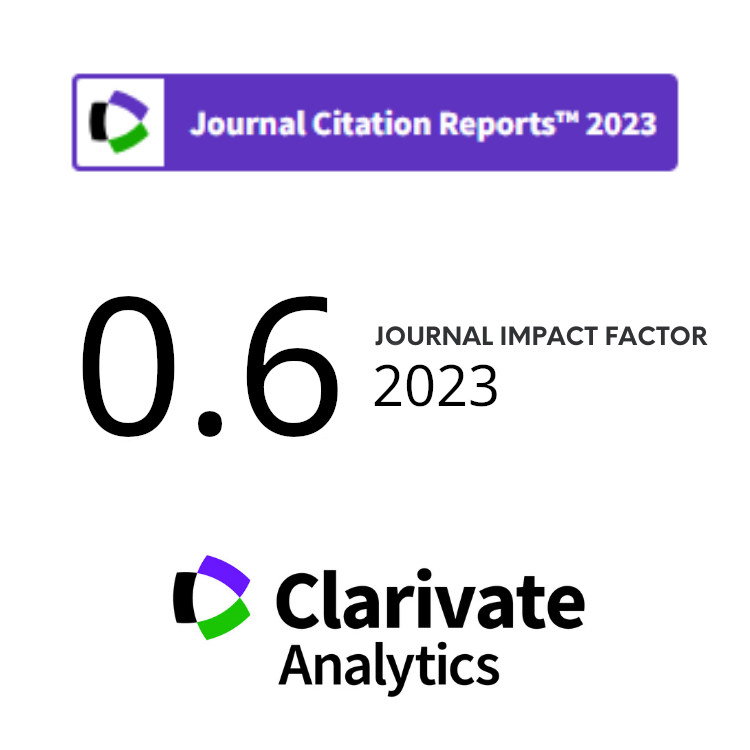Brain Tumor Segmentation on MR and CT Images Using Fuzzy C-Means and Active Contour Methods
Abstract
Keywords
Full Text:
PDFReferences
KEMENKES, National Guidelines for Medical Services Management of Brain Tumors, Regulation of the Head of Minister of Health of the Republic of Indonesia Number HK.01.07/MENKES/ 397/2020, KEMENKES (2020). (in Indonesian)
R. Vankdothu and M. A. Hameed, Meas.: Sens. 24 (2022) 100412.
G. Lavanya, K. L. Vinoci, D. Samvardani et al., J. Surv. Fish. Sci. 10 (2023) 219.
D. R. Sulistyaningrum, B. Setiyono and O. S. Hakim, AIP Conf. Proc. 2641 (2022) 040007.
V. Karanje and A. Gaikwad, Appl. Sci. Biotechnol. J. Adv. Res. 2 (2023) 14.
P. G. Reddy, T. Ramashri and K. L. Krishna, J. Sci. Res. 66 (2022) 227.
A. Fadjeri, A. Setyanto and M. P. Kurniawan, J. TIKomSiN. 8 (2020) 8. (in Indonesian)
D. Battalapalli, B. V. V. S. N. P. Rao, P. Yogeeswari et al., BMC Med. Imaging 22 (2022) 1.
G. S. Tandel, M. Biswas, O. G. Kakde et al., Cancer. 11 (2019) 111.
S. Normawati, Jurnal Riset Rumpun Ilmu Kedokteran 1 (2022) 168. (in Indonesian)
Z. Saga, A. Rahmouni, L. Belaroussi et al., Atom Indones. 50 (2024) 175.
L. Anggraeni and D. Nuramdiani, Jurnal Imejing Diagnostik (JImeD) 10 (2024) 37. (in Indonesian)
S. Wahyuni and L. Amalia, GALENICAL: Jurnal Kedokteran dan Kesehatan Malikussaleh 1 (2022) 88. (in Indonesian)
A. Kadir, Dasar Pengolahan Citra dengan Delphi, Andi Offset, Yogyakarta (2013) 1. (in Indonesian)
S. B. Dhumal and M. S. Tamboli, Int. J. Creative Res. Thouhts 10 (2022) 823.
S. A. Hussein and Q. A. Mosa, J. Al-Qadisiyah for Comput. Sci. Math. 14 (2022) 82.
B. P. Vikraman and J. Afthab, J. Auton. Intell. 6 (2023) 1.
E. R. Putri, A. V. Nasrullah and A. E. Fahrudin, Int. J. Electr. Comput. Eng. 5 (2015) 304.
E. Korotina, Exploring and Comparing Data Selection Methods in the Pre-Processing Step of a Deep Learning Framework for Automatic Tumor Segmentation on PET-CT Images, Thesis, University Groningen (2022).
W. El-Shafai, A. A. Mahmoud, E. S. M. El-Rabaie et al., Comput. Mater. Continua 73 (2022) 3455.
S. K. Veeramalla, V. Hindumathi, T. V. Reddy et al., J. Mech. Med. Biol. 23 (2023) 2340002.
K. Rezaee, M. K. N. Ahmadi and M. S. Anari, Majlesi J. Electr. Eng. 16 (2022) 21.
Y. Chen, P. Ge, G. Wang et al., Intell. Rob. 3 (2023) 23.
C. J. J. Sheela and G. Suganthi, J. King Saud Univ. Comput. Inf. Sci. 34 (2022) 557.
J. S. U. Rahman and S. K. Selvaperumal, Indones. J. Electr. Eng. Comput. Sci. 29 (2023) 270.
A. Bal, M. Banerjee, A. Chakrabarti et al., J. King Saud Univ. Comput. Inf. Sci. Sci. 34 (2022) 115.
R. Habib, A. Y. Suhan, A. Vadher et al., Clustering of MRI in Brain Images Using Fuzzy C Means Algorithm, in: Machine Learning and Autonomous Systems. Smart Innovation, Systems and Technologies vol. 269, Springer Nature, Singapore (2022) 437.
F. Basyid and K. Adi, Youngster Phys. J. 3 (2014) 209.
G. Naik, A. Abhyankar, B. Garware et al., Intern. J. Comput. Vision Image Process. 12 (2022) 1.
K. Fitriya and Hakim, Jurnal Explore IT. 11 (2019) 29. (in Indonesian)
V. Oreiller, V. Andrearczyk, M. Jreige et al. Med. Image Anal. 77 (2022) 8415.
E. R. Putri, A. Zarkasi, P. Prajitno et al., IAES Int. J. Artif. Intell. 12 (2023) 171.
A. R Raju, S. Pabboju and R. R. Rao, Sens. Rev. 39 (2019) 473.
H. S. Bhadauria, A. Singh and M. L. Dewal, Comput. Electr. Eng. 39 (2013) 1527.
N. Fadillah and C. R. Gunawan, Jurnal Riset Komputer (JURIKOM) 6 (2019) 126. (in Indonesian)
I. Aboussaleh, J. Riffi, A. M. Mahaz et al., J. Imaging 7 (2021) 269.
DOI: https://doi.org/10.55981/aij.2025.1466
Copyright (c) 2025 Atom Indonesia

This work is licensed under a Creative Commons Attribution-NonCommercial-ShareAlike 4.0 International License.












